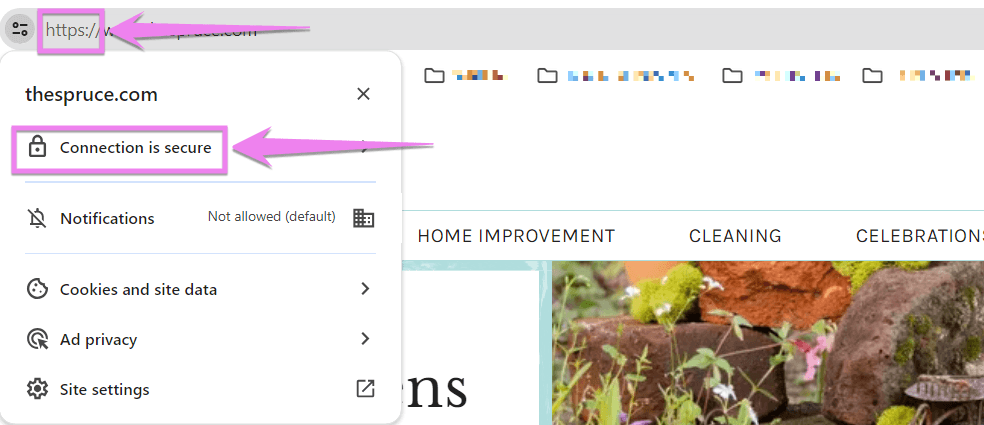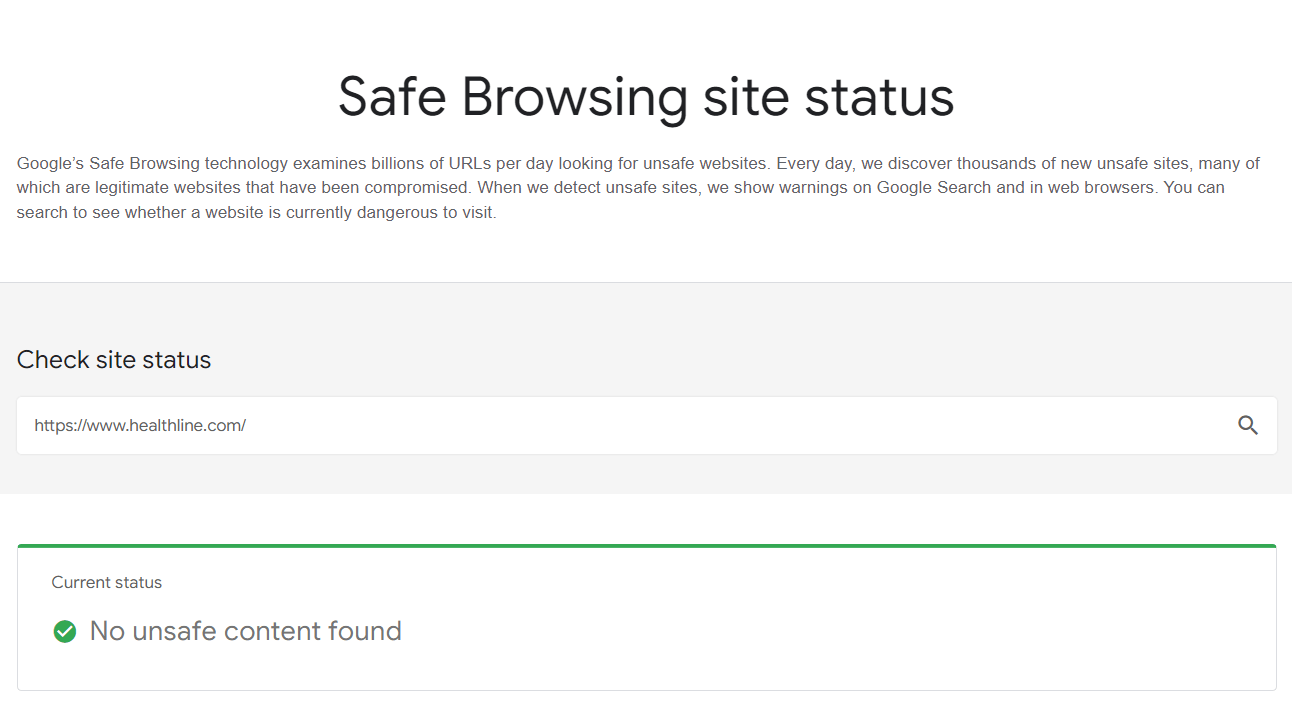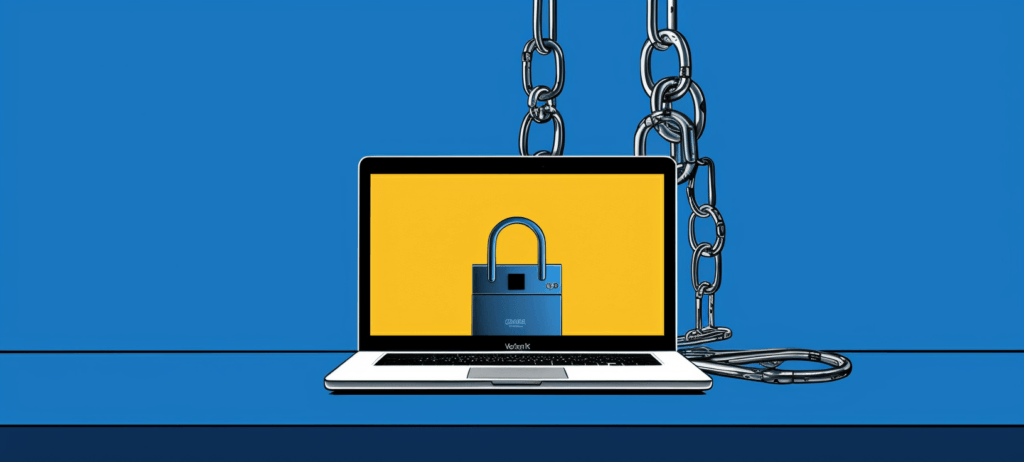- Home
- Blog
- Web Design Safe or Scam: How Can I Tell If a Website Is Secure?
Safe or Scam: How Can I Tell If a Website Is Secure?
-
 Published: Jun 24, 2024
Published: Jun 24, 2024
-
 7 min. read
7 min. read
-
 Maria Carpena
Maria Carpena Emerging Trends & Research Writer
Emerging Trends & Research Writer
- Maria is an experienced marketing professional in both B2C and B2B spaces. She’s earned certifications in inbound marketing, content marketing, Google Analytics, and PR. Her favorite topics include digital marketing, social media, and AI. When she’s not immersed in digital marketing and writing, she’s running, swimming, biking, or playing with her dogs.
We use the Internet for everything — from shopping and paying bills to keeping in touch with loved ones. With a lot of personal information at play, website security is essential.
It might leave you wondering: How can I tell if a website is secure?
We’ll cover signs that a website is secure — whether it’s yours or someone else’s — and how to keep your site’s security in top shape.
Want to get more tips and tricks for doing digital marketing? Subscribe to Revenue Weekly to get the latest insights from the experts!
Explore: 8 Ways to Protect Your Website
Why is website security important?
Even minor security concerns can cause major issues. Maintaining your website’s security helps protect your:
- Digital resources: Malware can give hackers access to your site, letting them use your website to host viruses that can steal sensitive data, crash your site, or infect your visitors’ devices.
- Reputation: If your site suffers a security breach, you may lose your customers’ trust even if you resolve the issue. Ensuring your website is secure helps safeguard your brand reputation.
- Google ranking: HTTPS has been a Google ranking factor since 2014. Google also considers it part of a site’s overall user experience, giving it even more weight in the algorithm.
How can I tell if a website is secure?
As you navigate different sites online, it’s essential to know how to identify which websites are safe and which aren’t. Luckily, you can use a few quick, easy signals to check for security.
For example, a website is more likely to be secure if:
- The URL starts with HTTPS
- The URL is spelled correctly
- The site includes contact information
- You can find customer reviews online
Let’s dive in:
The URL starts with HTTPS
The “S” in HTTPS stands for “secure” and means the website uses an encrypted server link.

You should also see a small padlock icon to the left of the URL. An encrypted connection will keep your data safe from malicious actors.
The URL is spelled correctly
Scammers sometimes create fake versions of real websites, hoping to trick users into entering login credentials or payment information. Double-check the spelling and verify that it matches the site you intended to access.
The site includes contact information
Real websites attached to reputable businesses typically include a Contact Us page, providing a way for customers to reach them.
A phone number and physical address are best because they’re the easiest to verify. However, an email address will also let you know the company wants customers to be able to reach them.
You can find customer reviews online
A Google search will let you see what other people are saying about the company or website. You’ll find out quickly if someone else has already flagged it as a danger or possible scam on Google Reviews.
Is your website secure?
The tactics above can help you determine if a site you’re visiting is safe, but you’ll need a different set of tools to determine if your own website is secure. Use the following tips when you need to verify your site security:
Let’s discuss each tactic:
1. Use Google
Google provides a couple of easy options to check your site’s security.
If you’re in a hurry, Google’s Safe Browsing tool lets you check your site’s current security status in seconds. Just go to Google’s Transparency Report site status page and enter your URL under “Check site status.”

If you have a little more time, enter “site:yourdomain.com” into the Google search bar. While this option takes a little longer, it gives you a slightly more detailed overview.
When the results appear, review them to ensure they all lead to pages on your site. Be sure to look for the alert “This site may be hacked” on the first few results.
2. Watch for alerts
Of course, you won’t be actively checking your site’s security every minute of every day. Notifications from outside sources can alert you to potential issues when you’re busy with other tasks.
You’ll want to keep an eye out for alerts from different sources, including the following:
- Your server host
- Google Search Console
- Your site’s malware scanner software
- Your browser
- Site users
3. Run a security check
You have a couple of options when you want a more detailed look at your site’s security.
Accessing your “Security Issues” report through your Google Search Console will give you a free overview. You’ll see Google’s review of several potential security issues, including malware infections and phishing attempts.
If you want peace of mind from having a professional check your site, consider getting a website security audit. A site security analysis will scan your site for dangers and vulnerabilities like malware, viruses, and harmful links.
How to keep your website secure
Once you’ve secured your website, you’ll want to be certain it stays secure. Keep your site protected with these tips for maintaining website security:
- Use a secure host: Most established, reputable providers have built-in security features like web application firewalls that keep their hosted sites secure. Denial-of-service (DDoS) attacks are another major security threat, so it’s crucial to look for hosts with robust DDoS protection.
- Choose a helpful CMS: In addition to helping you construct your site and manage your content, a good content management system (CMS) helps protect your site. Your CMS should be updated frequently with up-to-date protections against current cyberattacks. Look for a CMS with a user-friendly interface to make installing and monitoring new modifications easier.
- Use an HTTPS protocol: As mentioned above, HTTPS is a secure protocol that uses an encrypted link between a website and the server. An HTTPS encrypts any sensitive data your site collects, like personal information or credit card numbers, keeping it safe from hackers.
- Manage your passwords: Recycled or easy-to-guess passwords can be like a key under the mat for would-be cyberattackers. Cybersecurity experts recommend using two-factor authentication along with strong, unique passwords. You should change your password immediately if you suspect a security breach.
- Keep your website security tools active: Install website security testing tools like virus scanners and anti-malware software. If your web host doesn’t offer DDoS protection or a web application firewall (WAF), applications that provide them are well worth the investment. Remember to renew any paid subscription services on time to avoid lapses in coverage that can leave your site vulnerable.
- Test your security regularly: Setting a regular schedule to test your security measures lets you find and fix any vulnerabilities as soon as possible. Go through each section of your website regularly as a visitor to look for glitches, error messages, or suspicious redirects. Consider regular security audits to sweep for issues you may not have noticed.
Boost your website security with WebFX
From malware to insecure passwords to lapsed security tools, your website may have weak points that leave it vulnerable to cyberattacks. It’s crucial to keep your website as secure as possible to protect your customers’ data and your own reputation. Luckily, WebFX can help.
When you request a free SEO report, you’ll get a free website security check for your site. Your report will evaluate your site’s trust indicators, email privacy, and Secure Sockets Layer (SSL) certificate. If you’re looking for a more in-depth analysis, consider a full website security scan and audit.
We also offer website security and maintenance services, including daily security scans and backups, plus help to restore your site if hackers breach it. You’ll be able to breathe easier with a professional website maintenance company managing your security.
If you want to get started, contact us online or call us at 888-601-5359 to speak with a strategist today!
-
 Maria is an experienced marketing professional in both B2C and B2B spaces. She’s earned certifications in inbound marketing, content marketing, Google Analytics, and PR. Her favorite topics include digital marketing, social media, and AI. When she’s not immersed in digital marketing and writing, she’s running, swimming, biking, or playing with her dogs.
Maria is an experienced marketing professional in both B2C and B2B spaces. She’s earned certifications in inbound marketing, content marketing, Google Analytics, and PR. Her favorite topics include digital marketing, social media, and AI. When she’s not immersed in digital marketing and writing, she’s running, swimming, biking, or playing with her dogs. -

WebFX is a full-service marketing agency with 1,100+ client reviews and a 4.9-star rating on Clutch! Find out how our expert team and revenue-accelerating tech can drive results for you! Learn more
Make estimating web design costs easy
Website design costs can be tricky to nail down. Get an instant estimate for a custom web design with our free website design cost calculator!
Try Our Free Web Design Cost Calculator
Table of Contents
- Why is Website Security Important?
- How Can I Tell if a Website is Secure?
- The URL Starts with HTTPS
- The URL is Spelled Correctly
- The Site Includes Contact Information
- You Can Find Customer Reviews Online
- Is Your Website Secure?
- 1. Use Google
- 2. Watch for Alerts
- 3. Run a Security Check
- How to Keep Your Website Secure
- Boost Your Website Security with WebFX


Web Design Calculator
Use our free tool to get a free, instant quote in under 60 seconds.
View Web Design Calculator
Proven Marketing Strategies
Make estimating web design costs easy
Website design costs can be tricky to nail down. Get an instant estimate for a custom web design with our free website design cost calculator!
Try Our Free Web Design Cost Calculator





